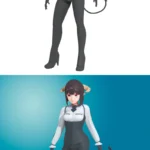How to Calibrate Your 3D Printer for Best Results
How to Calibrate Your 3D Printer for Best Results
Description: A step-by-step guide to calibrating your 3D printer for precise and quality prints, covering bed leveling, nozzle temperature, and extruder settings.
Keywords: 3D printer calibration, improve 3D print quality, 3D printer bed leveling
Article
Optimizing Your 3D Printer with Proper Calibration
Achieving high-quality, precise 3D prints often hinges on the right calibration of your printer. Fine-tuning elements like bed leveling, nozzle temperature, and extruder settings can drastically improve print quality, making this process essential for beginners and seasoned users alike.
Why Calibration Matters in 3D Printing
Calibrating your 3D printer ensures the print bed is perfectly leveled, the filament extrudes at the correct rate, and the temperature is optimized for each material. Proper calibration helps improve 3D print quality and reduce issues like warping, stringing, and layer misalignment.
Step 1: Bed Leveling
One of the most crucial steps in 3D printer calibration is achieving a level print bed. An unlevel bed can cause poor adhesion, affecting the entire print quality.
Manual Bed Leveling:
Start by homing your printer to bring the nozzle to the home position.
Use a sheet of paper to check the distance between the nozzle and the bed, adjusting screws under the bed until the paper slides with slight resistance.
Auto Bed Leveling (if available):
Many modern printers come with auto bed leveling sensors that automatically adjust the bed’s height. Run this feature in your printer’s settings to streamline the process.
Step 2: Nozzle Temperature Calibration
Finding the ideal nozzle temperature helps prevent under or over-extrusion and improves layer adhesion. Many filaments have a specific temperature range, but the optimal temperature can vary by printer.
Temperature Tower: Print a temperature tower to determine the best temperature for your filament. This model includes layers at different temperatures to show how the filament behaves under various settings.
For PLA, start around 200°C, for ABS around 240°C, and for PETG around 230°C. Adjust based on print results and filament guidelines.
Step 3: Extruder Calibration
To achieve smooth, consistent extrusion, calibrate your extruder steps. This involves adjusting the E-steps, or steps-per-millimeter, to ensure the extruder dispenses the exact amount of filament required.
Calculate Extrusion: Mark a point on your filament 100 mm from the extruder entry. Extrude 100 mm of filament through your software, then measure the actual distance extruded.
If the extruder under-extrudes or over-extrudes, adjust the E-steps in your printer’s settings to match the actual extrusion distance.
Step 4: Setting the Flow Rate
The flow rate controls the amount of filament extruded per layer, usually set around 100%. Fine-tuning this setting can enhance print accuracy, especially for intricate designs.
Flow Calibration Cube: Print a single-layer test square and measure its thickness. Adjust the flow rate to ensure the printed layer thickness matches the expected values.
Fine-tune to ensure that all walls and infill are properly filled without gaps.
Step 5: Calibrating Retraction Settings
Retraction settings control how much filament retracts before moving to a new section. Proper retraction settings help eliminate stringing and ensure clean transitions.
Start with Default Settings: For PLA, start with a retraction distance of 1-2 mm and speed of 25-40 mm/s. Adjust based on stringing or filament type.
Retract at Lower Temperatures: Some materials, like PETG, require lower temperatures for retraction to avoid excessive stringing.
Step 6: Test and Adjust as Needed
After initial calibration, perform test prints to identify any additional adjustments. Print small models, like a calibration cube or benchy, to assess your settings.
Final Tips for Maintaining Quality
Regular Bed Re-leveling: For consistent quality, check bed leveling periodically, especially after moving your printer.
Clean Nozzle and Bed Surface: Residue on the bed or nozzle can affect adhesion and extrusion consistency. Regular cleaning can improve results.
Taking time to calibrate your 3D printer can greatly improve print accuracy and overall quality. By carefully adjusting settings like bed leveling, nozzle temperature, and extruder steps, you’ll ensure your prints are sharp, clean, and precise.



